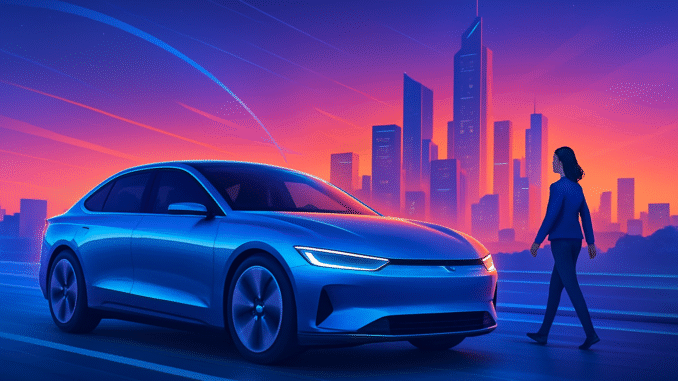
Driving Into the Future: Top Automotive Trends to Watch in 2025
The automotive industry has always been at the forefront of innovation, blending cutting-edge technology with consumer needs and environmental concerns. As we enter 2025, the pace of change in the sector is accelerating more than ever before. From electric vehicles to advanced driver-assistance systems, the way we drive—and even think about cars—is evolving rapidly. Whether you are a car enthusiast, a potential buyer, or simply someone interested in the future of transportation, staying informed about the latest automotive trends is essential.
In this article, we’ll explore the top automotive trends to watch in 2025, highlighting the technologies, designs, and market shifts shaping the industry.
1. The Electric Vehicle Revolution Gains Momentum
Electric vehicles (EVs) are no longer a futuristic concept—they are here, and they are booming. In 2025, experts predict a significant jump in EV adoption worldwide, thanks to stricter emissions regulations, improved charging infrastructure, and falling battery costs.
- Wider Range and Faster Charging: Modern EVs are expected to offer ranges exceeding 400 miles per charge, while new ultra-fast charging stations can replenish 80% of the battery in under 20 minutes.
- Affordable Options: More automakers are releasing budget-friendly EVs, making them accessible to middle-income households.
- Government Incentives: Many countries continue to provide tax breaks, subsidies, and rebates to encourage EV purchases.
This shift signals a future where EVs may eventually overtake traditional internal combustion engine (ICE) vehicles, redefining the automotive landscape.
2. Autonomous Driving Takes the Spotlight
Self-driving cars have been in development for years, but 2025 could be a turning point. With advancements in artificial intelligence (AI), machine learning, and sensor technologies, autonomous vehicles (AVs) are moving closer to mainstream adoption.
- Level 3 and 4 Autonomy: Many manufacturers are launching vehicles capable of handling highway driving and complex city navigation with minimal human input.
- Safety First: Automakers are focusing on reducing accidents by using advanced driver-assistance systems (ADAS), such as lane-keeping assistance, adaptive cruise control, and automated emergency braking.
- Shared Mobility: Autonomous ride-hailing services are also expanding, promising to reduce traffic congestion and make urban transportation more efficient.
Although full autonomy (Level 5) may still be years away, 2025 will bring us much closer to a world where cars drive themselves.
3. The Rise of Connected Cars
Connectivity is no longer a luxury—it’s an expectation. Cars are evolving into smart devices on wheels, integrating seamlessly with our digital lives.
- 5G Integration: Ultra-fast 5G networks will power connected cars, enabling real-time navigation, traffic updates, and vehicle-to-vehicle (V2V) communication.
- Over-the-Air (OTA) Updates: Similar to smartphones, cars can now receive software updates remotely, improving features and fixing bugs without visiting a dealership.
- Personalized Driving Experience: Connected cars offer AI-powered assistants, advanced infotainment systems, and personalized profiles for each driver.
This trend highlights how the line between automotive technology and consumer electronics is blurring, creating an ecosystem where vehicles are as smart as our devices.
4. Sustainable Materials and Eco-Friendly Designs
Environmental sustainability is at the core of automotive innovation. Beyond electrification, manufacturers are rethinking how cars are built and what materials they use.
- Recycled and Bio-Based Materials: Interior components are increasingly made from recycled plastics, vegan leather alternatives, and plant-based fabrics.
- Lightweight Designs: Using aluminum, carbon fiber, and advanced composites reduces vehicle weight, improving efficiency and performance.
- Green Manufacturing Practices: Automakers are committing to carbon-neutral factories, renewable energy usage, and eco-friendly production methods.
As consumers grow more eco-conscious, these sustainable designs are becoming a key factor in buying decisions.
5. Advanced Safety Features
Safety has always been a priority in the automotive sector, but 2025 brings a new level of innovation.
- AI-Powered Accident Prevention: Cars can predict potential collisions using predictive analytics and respond faster than human reflexes.
- Driver Monitoring Systems: Cameras and sensors track driver alertness, reducing risks related to fatigue or distraction.
- Enhanced Crash Protection: Improvements in structural design, airbags, and pedestrian detection systems make vehicles safer for both occupants and pedestrians.
These features not only reduce fatalities but also lower insurance costs, making safety a top trend for both consumers and regulators.
6. Growth of Mobility-as-a-Service (MaaS)
Urbanization and changing consumer behavior are transforming how people view car ownership. In 2025, Mobility-as-a-Service (MaaS) continues to grow as an alternative to traditional ownership.
- Subscription Models: Instead of buying, consumers can subscribe to fleets that allow them to switch between different types of vehicles.
- Car Sharing and Ride-Hailing: Services like Uber, Lyft, and regional ride-hailing platforms are expanding, reducing the need for individual ownership in urban areas.
- Integration with Public Transport: MaaS platforms integrate ride-sharing, car rentals, and public transportation into one seamless app-based service.
This shift highlights a cultural change in how people view cars—not just as personal property, but as shared tools for mobility.
7. Hydrogen-Powered Vehicles Enter the Scene
While EVs dominate headlines, hydrogen fuel cell vehicles (FCVs) are gaining traction as a viable alternative.
- Longer Range: Hydrogen vehicles often provide ranges exceeding 500 miles, making them suitable for long-distance travel.
- Fast Refueling: Unlike EVs, hydrogen cars can be refueled in under 5 minutes.
- Commercial Adoption: Many trucking and heavy transport companies are investing in hydrogen technology for fleet operations.
Though infrastructure challenges remain, 2025 may be the year hydrogen technology steps into the spotlight.
8. Personalized and AI-Enhanced Driving
Artificial intelligence is making vehicles smarter, more intuitive, and highly personalized.
- Adaptive Driving Modes: Cars can adjust performance settings based on driver preferences, road conditions, or even mood.
- Voice Assistants: Natural language processing allows drivers to interact with cars as they would with virtual assistants like Siri or Alexa.
- Predictive Maintenance: AI can detect issues before they become major problems, saving time and reducing costs.
This personalization makes driving more convenient, efficient, and enjoyable.
9. Automotive Cybersecurity Becomes Critical
With connected cars comes a new challenge—cybersecurity. Automakers are investing heavily in protecting vehicles from hackers and data breaches.
- Encrypted Communications: Vehicle-to-vehicle and vehicle-to-infrastructure systems are being secured with advanced encryption.
- User Privacy: Automakers are prioritizing consumer data protection, ensuring personal information stays safe.
- Cybersecurity Regulations: Governments are introducing standards and frameworks to ensure vehicles meet security benchmarks.
As cars become increasingly digital, cybersecurity is no longer optional—it’s essential.
10. The Future of Car Design
Finally, design itself is evolving to reflect modern needs and aesthetics.
- Minimalist Interiors: Digital dashboards and touchscreen controls are replacing traditional buttons and knobs.
- Aerodynamic Shapes: Sleek, futuristic designs not only look stylish but also improve fuel efficiency.
- Customization Options: Consumers can personalize everything from color schemes to in-car lighting, making vehicles a reflection of their lifestyle.
In 2025, cars aren’t just tools for transportation—they’re personalized experiences that blend technology, sustainability, and style.
Conclusion
The automotive industry in 2025 is undergoing one of the most transformative periods in its history. From the widespread adoption of electric and autonomous vehicles to the growth of mobility services, connected technologies, and eco-friendly designs, the future of driving is more exciting—and sustainable—than ever.
For consumers, these trends mean more choices, safer roads, and smarter vehicles. For automakers, they present challenges and opportunities to innovate. One thing is certain: the way we drive in 2025 will be very different from just a decade ago.
As we look ahead, embracing these trends ensures not just a smarter, safer driving experience, but also a future where mobility is aligned with sustainability, convenience, and technology.

